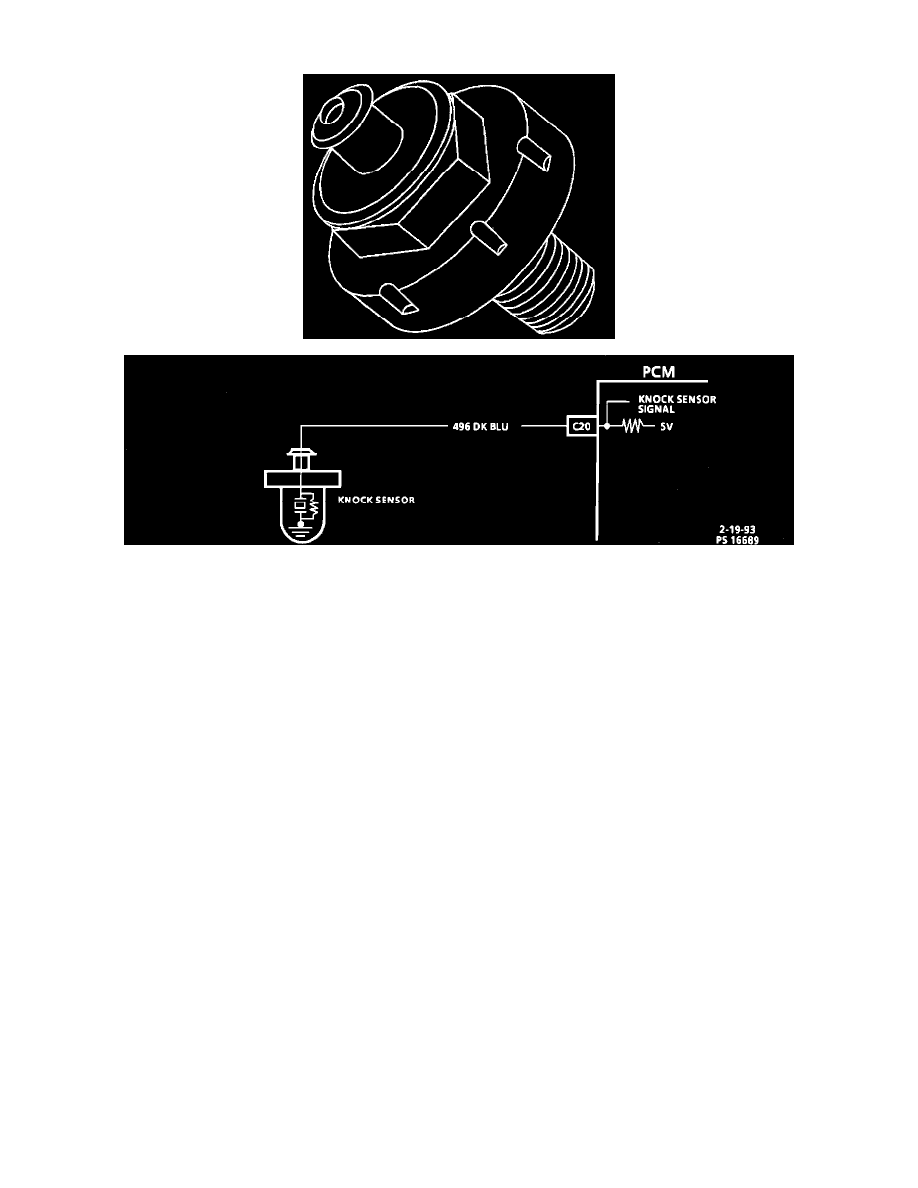Grand AM V6-3100 3.1L MFI VIN M (1994)

Knock Sensor: Description and Operation
Knock Sensor Circuit Diagram
PURPOSE
The Knock Sensor (KS) system is used to detect engine detonation. The control unit uses this signal to retard ignition timing when a knock occurs. This
helps to maintain optimum ignition timing advance while avoiding damaging (and annoying) engine "PING" or "KNOCK" due to detonation in the
combustion chambers.
OPERATION
The circuitry, within the knock sensor, causes the PCM's 5.0 volts to be pulled down so that under a no knock condition, CKT 496 would measure
about 2.5 volts. The knock sensor produces an AC signal, which rides on the 2.5 volts DC voltage. When a knock occurs, the resultant voltage "spike"
from the sensor oscillates about this 2.5 volt "bias". This voltage "spike" rises above the thresh-hold voltage (about 3 volts) indicating an engine knock.
When the control module receives a "Knock" signal, It responds by retarding the ignition timing. When the knocking stops, the control module
advances the timing in small increments back to its preset value. This allows the PCM to maintain optimum ignition timing advance for better fuel
economy and performance under all operating conditions.
OPERATION
The Knock Sensor module is located within the PCM and is replaceable.
